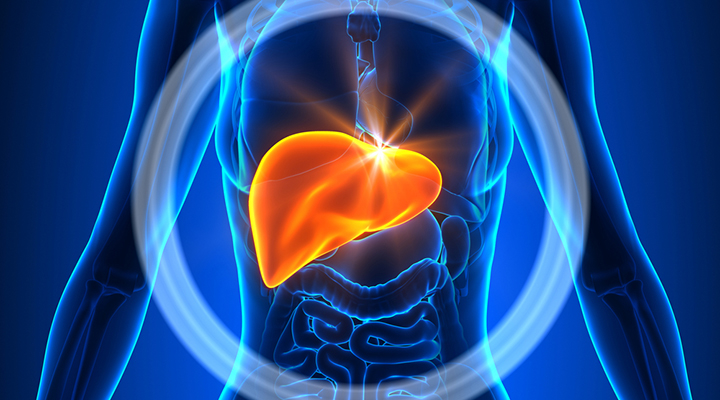Nonalcoholic fatty liver disease (NAFLD) is a condition where an excessive accumulation of fats (such as triglycerides) build up in the liver cells known as hepatocytes. The biochemical processes in our body that provide fuel generate toxic by-products. The liver is responsible for filtering and detoxifying these byproducts along with other harmful substances that enter the body, such as drugs, alcohol and chemicals. If the liver is not able to perform properly, harmful substances will begin to attack and harm the body. An inadequately functioning liver adversely affects glucose and fat metabolism, resulting in fat deposits in and around the liver tissue, known as fatty liver disease.

Liver disease is one of the few major causes of premature death that is on the increase and urgent action is needed to halt this trend.
Nearly 10 percent of U.S. teens have nonalcoholic fatty liver disease, a largely silent accumulation of fat in their liver cells puts them at risk for developing later cardiovascular disease and additional liver problems. Fatty livers occur in 33% of European-Americans, 45% of Hispanic-Americans, and 24% of African-Americans. |
NAFLD typically does not have any symptoms but in some cases a sufferer may experience pain in the upper right area of their abdomen, enlarged liver .One needs to note that liver problems cause few symptoms until a late stage when the disease is relatively advanced.
The possible risk factors leading to NAFLD are:
- Age (over 50): The prevalence of NAFLD increased with increasing age. The prevalence of NAFLD in premenopausal women (6%) was lower than in postmenopausal women (15%). The incidence of NAFLD was 3.5% (28/802) in premenopausal women, 7.5% (4/53) in menopausal women, 6.1% (24/392) in postmenopausal women, and 5.3% (11/206) in women receiving hormone replacement therapy. It was found that aging is a risk factor for NAFLD in premenopausal women, independent of weight gain or influence of metabolic syndrome.

- Diet: There are three major sources for the increased triglyceride deposition in the liver: excessive influx of free fatty acids (FFA) from endogenous fat depots, increased de novo hepatic lipogenesis (process by which acetyl-CoA is converted to fats), and exogenous-nutritional fat. Higher carbohydrate intake (above 54% of calories) seems to be associated with significantly higher odds of inflammation, while higher fat intake is associated with significantly lower odds of inflammation. Fast-food consumption has strong positive associations with weight gain and insulin resistance in humans. In the CARDIA study, a 15-year prospective follow up of 3031 young adults, those with frequent (more than twice a week) visits to fast-food restaurants gained an extra 4.5 kg of bodyweight and had a two-fold greater increase in insulin resistance compared to participants with infrequent (less than once a week) fast-food consumption. Furthermore, feeding experimental animals with the ‘‘cafeteria diet’’ (a feeding regimen similar to fast food) leads to liver damage. HFCS (high fructose corn syrup) is a prime suspect, along with trans-fatty acids contained in cheap processed oils. HFCS is found in all kinds of processed foods, even sandwich meats. Several studies in both animals and humans (here and here) support the understanding that a deficiency of choline is a critical component for the development of NAFLD.
- Obesity: Majority of patients with NAFLD are overweight or obese, therefore small increases in weight such as 2-3kg in body weight may lead to NAFLD, but more importantly this may occur within the normal ranges of weight. The World Health Organization (WHO) has redefined the criteria of obesity for Asians when body mass index (BMI) is>25 Kg/m2 and overweight when BMI is between 23-25Kg/m2. In another study NASH patients showed an increase in body weight, fat mass and visceral fat accumulation with respect to HCV and control subjects.
- High Cholesterol: High cholesterol levels and elevated triglycerides are common in people who develop NASH. It’s estimated that up to 80 percent of people with NASH have hyperlipidemia.
- Diabetes: When your body becomes resistant to the effects of insulin or your pancreas doesn’t produce enough insulin to maintain a normal blood sugar (glucose) level, this can damage many organs in your body, including your liver. As many as three in four people with NASH also have diabetes.
- Rapid weight loss:
- Weight reduction surgery – gastroplasy or gastric bypass: Operations to remove large sections of the small intestine (small bowel resection), treat obesity (gastric bypass) or bypass parts of the small intestine (jejunal bypass) often lead to rapid weight loss, which may increase your risk of nonalcoholic fatty liver disease.
If you seem to be coping with any of the above risk factors, its time to take action. Eating healthier, being more active and maintaining a healthy weight is going to have the biggest impact on liver health, because at present, there aren’t any good drug treatments for fatty liver disease.
Health Tip: Avoid all processed foods, sodas, sports drinks, junk foods, and trans-fats. Increase omega-3 fatty acids by replacing processed oils (corn, canola, soybean, safflower, sunflower and cottonseed oil) with natural fats (butter, virgin coconut oil, virgin palm oil, lard or beef drippings).
References: